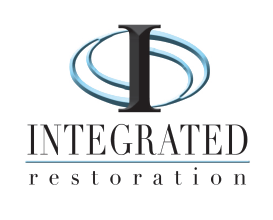Cleveland Water Damage 101: Signs, Causes, and What Comes Next
Water damage can sneak up on you. A small leak under the floor. A dripping pipe behind a wall. Or worse—an unexpected storm or basement flood.
Whether you're a homeowner or managing a commercial property, catching water damage early can save you time, money, and stress. At Integrated Restoration, we help Cleveland property owners navigate water damage cleanup from start to finish. Here’s what to watch for—and what to expect when it’s time to call in a pro.
Signs of Water Damage
Sometimes water damage is obvious, like a burst pipe or standing water. But many times, it’s subtle and easy to miss—until it becomes a bigger issue.
Keep an eye out for:
Stains or discoloration on ceilings and walls
Peeling paint or bubbling drywall
Musty or damp odors
Warped flooring or baseboards
Visible mold or mildew
An unexplained increase in your water bill
If you notice any of these signs, especially after a heavy rain or plumbing issue, don’t wait—hidden water can lead to structural damage and mold growth fast, especially as we move into a warmer season.
Common Causes of Water Damage in Cleveland
Water damage can come from many sources—some slow and silent, others immediate and overwhelming. In Northeast Ohio, some of the most common causes include:
Heavy rains and flash flooding
Leaking roofs or poor drainage
Basement seepage from high groundwater
Clogged gutters and downspouts
Sewer backups and sump pump failures
Cleveland’s older homes and unpredictable weather can be a tough combination—especially when maintenance gets delayed or drainage systems fail. Learn more about our residential water damage services.
What to Do Right After You Discover Water Damage
Before you panic, take a deep breath—and follow these initial steps:
Turn off the water supply if the damage is caused by a plumbing issue.
Shut off electricity in affected areas if it's safe to do so.
Move furniture and valuables away from the water to prevent further damage.
Remove standing water using towels or a wet/dry vacuum (only if the water is clean—avoid touching sewage or floodwater).
Document the damage with photos and video.
Call a professional water damage restoration company to assess the situation and begin cleanup.
Time matters. The faster you respond, the less chance water has to spread or cause secondary issues like mold growth. Learn more about preventing mold here.
DIY vs. Professional Help: What You Should Know
It’s tempting to dry things out yourself and move on—but there’s often more happening beneath the surface.
DIY Cleanup Can Miss:
Hidden moisture in walls, floors, and insulation
Contaminated water and health risks
Mold colonies that form within 24–48 hours
Structural or electrical damage
Why a Pro Is Worth It:
Professionals use commercial-grade drying and dehumidifying equipment
They have moisture meters and thermal tools to spot hidden water
They help prevent mold, preserve structural integrity, and reduce long-term costs
You get documentation for insurance and peace of mind
What the Water Damage Restoration Process Looks Like
Here’s what you can expect when you work with a professional restoration team like Integrated:
Inspection & Damage Assessment
We use advanced tools to pinpoint damage and moisture, even behind walls or under flooring.Water Removal
Pumps and vacuums quickly extract standing water to minimize further damage.Drying & Dehumidifying
We use HEPA dehumidifiers and air movers to thoroughly dry affected areas.Cleaning & Disinfecting
We disinfect surfaces, remove odors, and ensure contaminants and mold spores are eliminated.Repair & Restoration
Once the area is dry and safe, we restore flooring, drywall, and other structural elements to pre-loss condition.
Navigating Insurance After Water Damage
If your water damage is caused by a sudden event like a pipe burst or storm, your homeowner’s or commercial insurance policy may cover it. But dealing with insurance can be stressful—that’s where we step in.
Integrated Restoration helps by:
Taking detailed photos and notes to document the damage
Communicating directly with adjusters when needed
Providing transparent quotes and itemized estimates
Guiding you through each step of the claims process
Our team is experienced in working with all major carriers and can help ensure you receive fair compensation—without the hassle.
How to Prevent Future Water Damage
Fixing the issue is only the first step—protecting your home or property long-term means preventing a repeat.
Here are a few steps you can take:
Schedule annual roof and gutter inspections
Keep gutters and downspouts clear of debris
Install a sump pump and battery backup in basements
Insulate pipes to prevent freezing in winter
Address any signs of moisture or leaks early
Grade landscaping to direct water away from the foundation
A little maintenance now goes a long way toward avoiding big restoration bills later.

